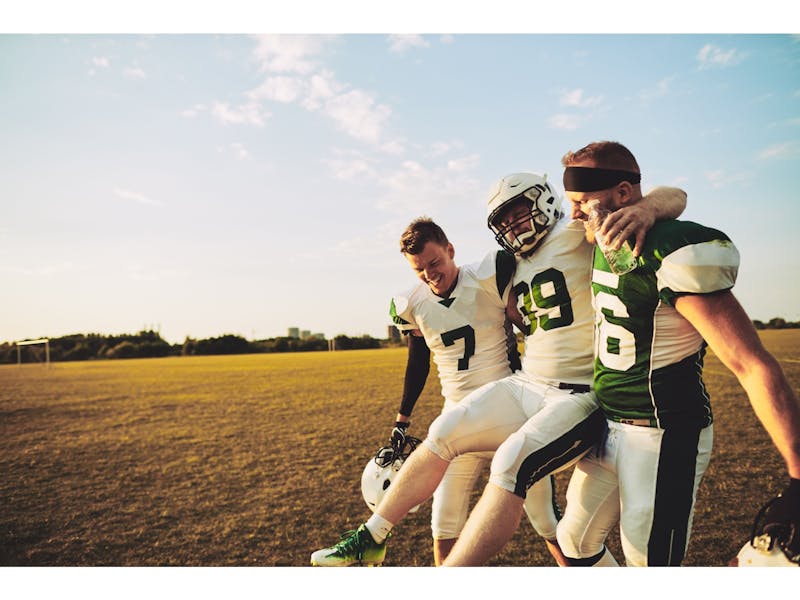
Football is one of the most physically demanding sports, requiring speed, strength, agility, and endurance. Football puts athletes at a higher risk for injuries from sprains to fractures, football-related injuries can have long-lasting effects on an athlete’s career and overall health. Understanding the common injuries and how to prevent them is crucial for players and coaches.
Common Orthopedic Injuries in Football
Anterior Cruciate Ligament (ACL) Tears
The ACL is one of the four main ligaments in the knee, responsible for stabilizing it during movement. ACL tears are common in football due to sudden changes in direction, awkward landings, or direct blows to the knee. ACL injuries are often severe, requiring surgery and long recovery periods.
Prevention:
- Strengthening the muscles around the knee, particularly the quadriceps and hamstrings.
- Proper warm-up exercises to enhance flexibility and mobility.
- Practicing proper landing techniques during drills.
Meniscus Tears
The meniscus is a piece of cartilage in the knee that cushions and stabilizes the joint. Twisting or rotating the knee while bearing weight, especially during tackles or pivoting, can cause a meniscus tear. These injuries can lead to knee pain, swelling, and limited motion.
Prevention:
- Strengthening leg muscles to support the knee.
- Using proper footwork and pivot techniques during play.
- Wearing the right footwear to ensure stability.
Shoulder Dislocations
Shoulder dislocations often occur when a player lands on their arm or is hit from the side during tackles. This injury can damage surrounding ligaments and tissues, leading to chronic instability if not treated properly.
Prevention:
- Strengthening the rotator cuff muscles and improving shoulder stability.
- Learning safe tackling techniques to reduce impact on the shoulder.
- Using shoulder pads that fit properly and offer sufficient protection.
Hamstring Strains
Hamstring strains are a result of overstretching or tearing the muscles at the back of the thigh. Football players are prone to these injuries due to the explosive sprints and quick accelerations required during games.
Prevention:
- Regular stretching and strengthening of the hamstrings.
- Incorporating dynamic warm-up routines, such as leg swings and high knees.
- Gradual progression in training intensity to avoid muscle overload.
Concussions
Concussions in football typically occur during high-impact collisions, such as helmet-to-helmet hits, hard tackles, or blows to the head from falling to the ground, which cause the brain to rapidly move within the skull.
Prevention:
- Wearing properly fitted helmets
- Adhering to proper tackling techniques (e.g., avoiding helmet-to-helmet contact)
- Following strict return-to-play protocols after a head injury can help reduce the risk of concussions.
Ankle Sprains
Ankle sprains occur when the ligaments that support the ankle stretch or tear, often due to sudden changes in direction or landing awkwardly after a jump. This injury can be painful and may lead to chronic instability if not properly rehabilitated.
Prevention:
- Strengthening the muscles around the ankle to improve stability.
- Practicing balance exercises to reduce the risk of rolling the ankle.
- Taping or bracing the ankle during games for added support.
While football carries an inherent risk of injury, many of the most common orthopedic injuries can be prevented with proper training, preparation, and equipment. By focusing on strength, flexibility, and technique, players can reduce their risk of injury and enjoy a longer, healthier time on the field. Athletes, coaches, and medical professionals should work together to prioritize injury prevention to ensure the safety and well-being of football players at all levels.
Our team of Sports Medicine specialists are here to help athletes at all levels of the game. If you experience and injury or have chronic pain during or after a sport, text or call us today at 856.690.1616 to be evaluated. Our goal is to get you back in the game and playing at your peak performance level.

